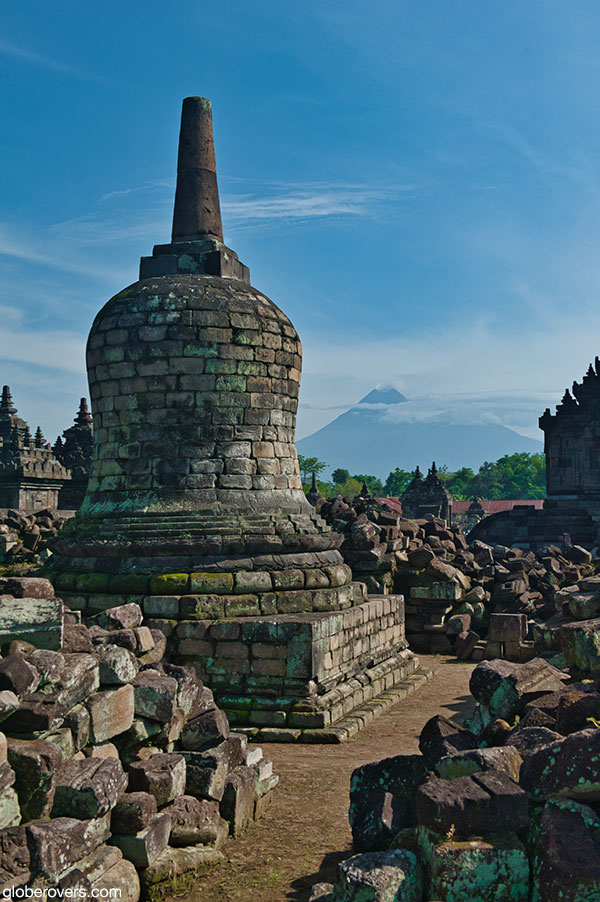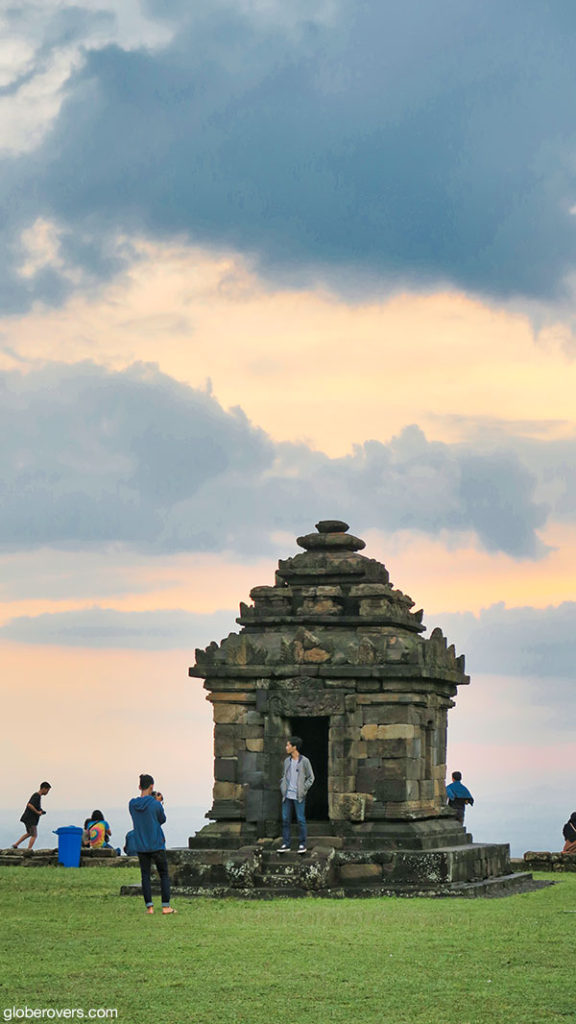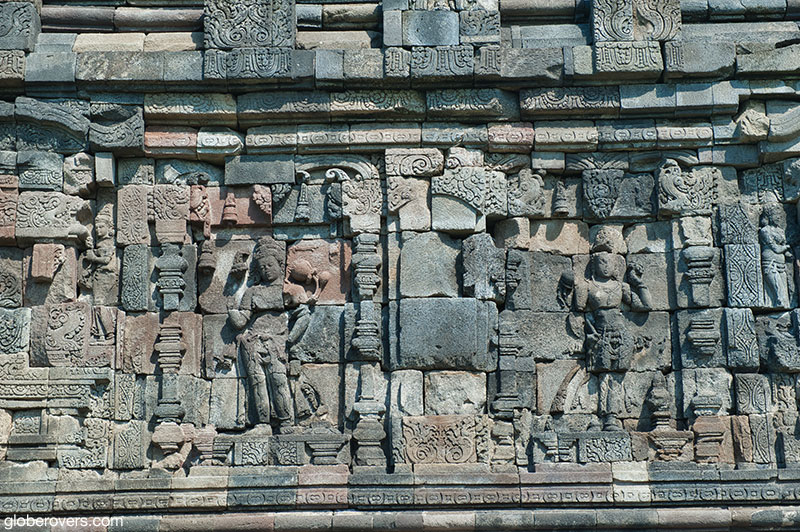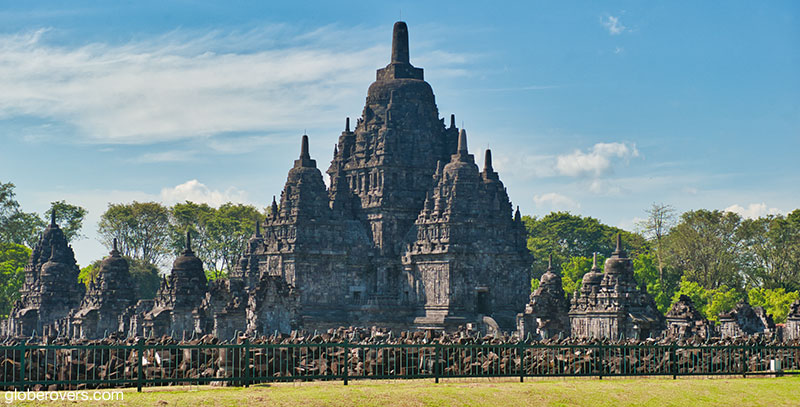
The city of Yogyakarta, gateway to central Java Island, has more than enough attractions to keep the curious traveller busy for a few days.
Yogyakarta, known as “Jogja”, is a vibrant cultural city with many historical landmarks. A great base from where to explore the vast temple complex east of town.
The highlight of this part of Indonesia is the spectacular ancient temple ruins to the east of the city of Yogyakarta.
Why travel to the Sacred Ruins of Yogyakarta?
- The low-down: Yogyakarta and the wider area around the city include enough attractions to keep you busy for a while. 9th Century temple ruins, great landscapes and volcanoes, beaches, and a lot more. Yogyakarta is a pleasant city.
- The brightest highlight? There are many ancient temple ruins east of Yogyakarta
though the most impressive and most popular are Candi Prambanan and Ratu Boko. - Intrepid destination? While the largest temples such as Candi Prambanan can be very crowded, be here at the opening time to beat the crowds. Smaller temples are quaint and delightful with almost no visitors all day long.
- Globerovers score (10 is highest): If you are into ancient temple ruins then this is your playground. Take it slow and closely adore the intricate inscriptions and fascinating architecture from around the 9th century. We give it a score of 8.5.
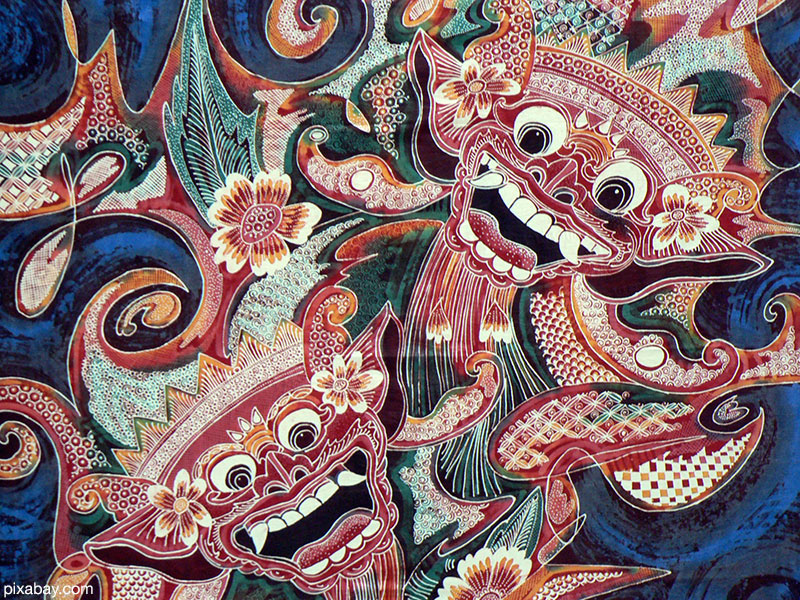
If you are into arts and crafts, start off with a look at how the artistic locals create batik fabrics. Several markets and even some museums showcase their intrinsic works of art.
No visit to Yogyakarta is complete without batik shopping. Buy at the Beringharjo Market, or at shops such as Hamzah Batik Malioboro, Batik Winotosastro, Rianty Batik or Batik Yudhistira.
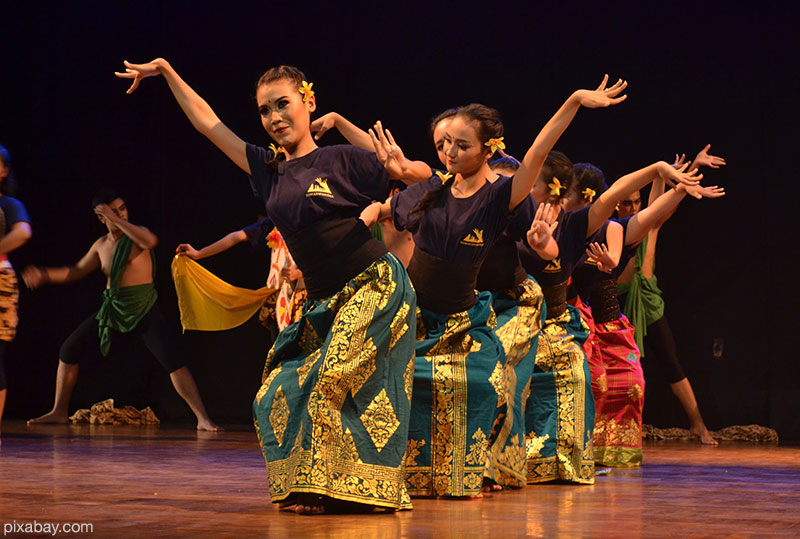
Yogyakarta is home to the garden chateau of Taman Sari Palace, with its elaborate series of swimming pools built during the Portuguese colonial times. Nearby Keraton Ngayogyakarta Hadiningrat Palace, simply known as Yogyakarta Palace, is the main seat of the Sultan of Yogyakarta and his family and has a cultural centre with a museum. Don’t miss the theatrical performance with shadow puppets (Wayang Kulit) at the Sonobudoyo Museum around the corner from the palace.

Yogyakarta is also the gateway to many interesting places around Central Java Island. If you are craving for beach life, head south of the city to Pantai Parangtritis, Pantai Parangkusumo, Pantai Cemara Sewu Bantul, and Pok Tunggal Beach.

Temples East of the City
However, if spectacular ancient temple ruins are of interest to you, drive about 15 km east of the city to the impressive Prambanan temple, surrounded by several slightly less significant temple complexes. Prambanan temple, also referred to as Candi Prambanan or Loro Jonggrang, built in the 9th century, is dedicated to the Hindu god of Shiva and consists of no less than 240 temples in total.
The three tallest temples at Prambanan, rising to a height of up to 47 m, are decorated with reliefs illustrating the ancient Indian epic poem of Ramayana and dedicated to the three great Hindu divinities of their god as the creator (Brahma), the preserver (Vishnu) and the destroyer (Shiva). Three surrounding temples are dedicated to the animals that serve them.
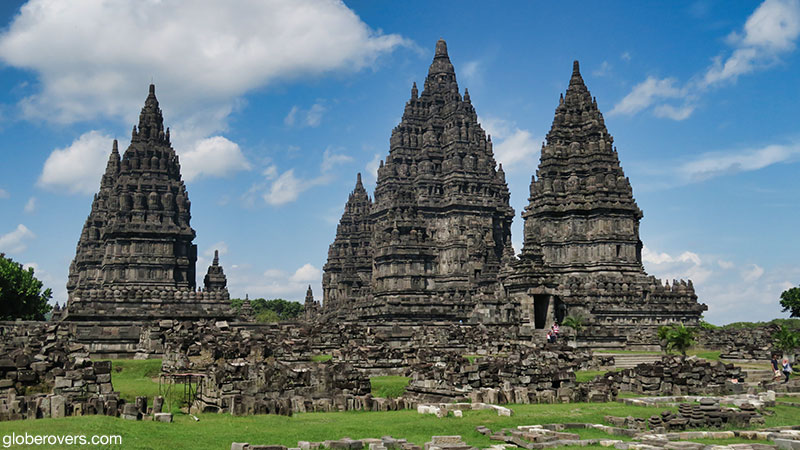
A UNESCO World Heritage Site, Prambanan is the largest Hindu temple in all of Indonesia. Much of the complex is well preserved, and much appreciated by the locals and foreign visitors alike.
Entrance fees for foreigners are steep and the number of local visitors can be overwhelming, so best arrive at 6 am when the gates open.
Located on the border between the two provinces of Yogyakarta and Central Java, the other structures within the Prambanan temple compound, known as the Prambanan Archaeological Park, include the 8th-century Sewu temple complex. In total, the park has around 500 temples.
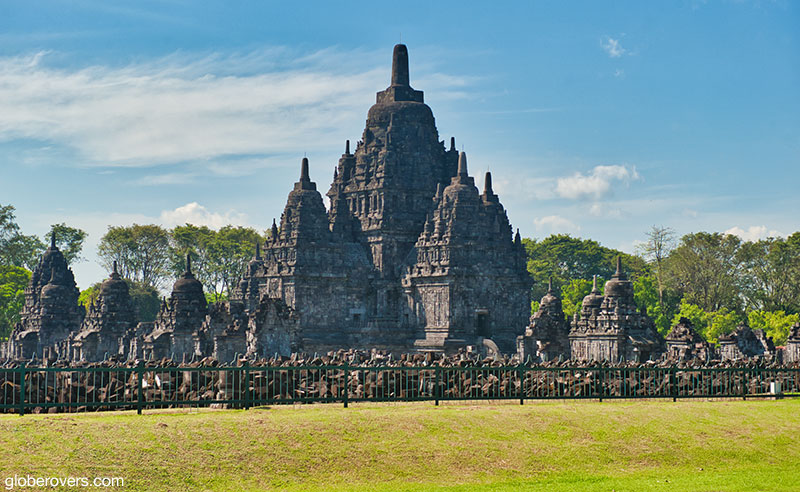
Sewu temple, with its four pairs of giant Dwarapala gate guardian statues, is Indonesia’s second-largest Buddhist complex (after Borobudur), which includes the temples of Lumbung, Bubrah and Asu. These are mostly decorated with the Indonesian version of the Ramayana illustrations. While overall not as impressive as Prambanan, Sewu is a feast for the eyes if you are looking for the smaller details.
Other temples in the wider area include the Buddhist temple complex of Plaosan, which is near the Dengok River and surrounded by rice paddies along with vegetation such as bananas and corn. The complex consists of about 250 smaller temples and stupas, many of them merely in a state of jumbled pieces.
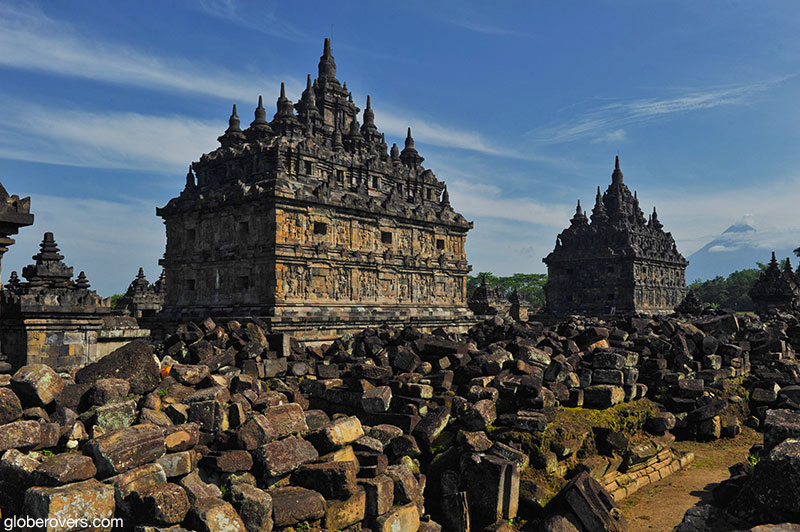

Built in the mid-9th century during Central Java’s Hindu-Buddhist Kingdom of Medang, the Plaosancomplex is split into a smaller southern section, Plaosan Kidul, and the larger northern section, Plaosan Lor.
The mid to southern side of Plaosan Lor is the most spectacular, in particular the two main shrine buildings are known as the viharas. The southern vihara, which has been better protected than its northern counterpart, houses mostly male statues in contrast to the mostly female statues in the northern vihara. While there is no credible explanation for this, some conjecture theories are that the northern vihara was a nunnery, while the southern a monastery. Other than the male and female statues, both viharas are very similar in their layout.
“Jogja City” is the soul of Java Island known for its culture, arts, and history.
As you step into the dark interior, let your eyes adjust to the low light and you will find that apart from the small entrance chamber, there are also three small rooms serving as shrines.
In the entrance chamber is a pair of monsters flanked by winged half-bird, half-woman creatures, known in Southeast Asian Buddhist mythology as kinnaras. In the central shrine chamber are two Bodhisattva statues in the typical vara-mudra Buddhist pose. While some of the statues’ arms or hands have been broken off over the years, some left hands are holding a flower, which identifies them as Avalokiteśvara, a bodhisattva (someone practising the way of life of a Buddha) who embodies the compassion of all Buddhas.
The small chambers on both sides contain a similar layout of Bodhisattva statues of which most sit on lotus thrones on an elevated altar. The interior walls have interesting and complex relief carvings of deities, monks and dignitaries from the Medang Kingdom.
You can easily spend hours trying to figure out the inscriptions and compositions. Be careful not to hit your head or even your knees or hands against the wall as they are constructed of ancient volcanic rock with very sharp edges.
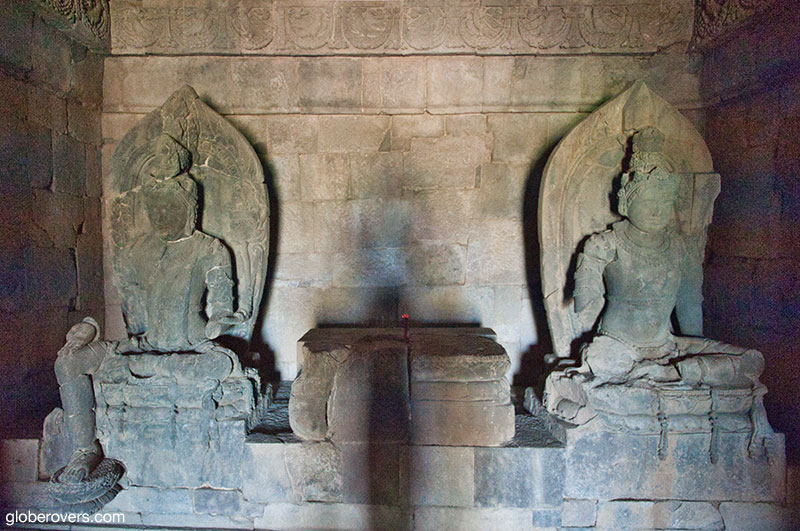
The Plaosan complex gets considerably fewer visitors than Prambanan and is a peaceful area to explore. Only the large fearsome-looking statues of the Dwarapala temple guardians can disturb your peace and quiet. Armed with a snake, rope and a sword, they protect the temple against all evil spirits. But don’t fear, as I heard they also protect inquisitive travellers.
Directly south of Prambanan temple is Ratu Boko Temple Palace, fondly referred to as the “sunset temple”, as most visitors come here to see the setting sun throwing its last fainting rays around the ancient archway remains of the temple.
Located on a hillside overlooking the Prambanan temples with Mount Merapi as its backdrop, Ratu Boko was built in the 9th century. Sadly, much of it has been destroyed so only a few door archways are still standing and the long flight of stairs to reach them.
Halfway back to Yogyakarta is the small sunken Sambisari temple, also known as the “underground temple”. It was discovered by chance when a farmer, working in his paddy field, hit a solid object and then dug deeper to unearth a large solid carved stone.
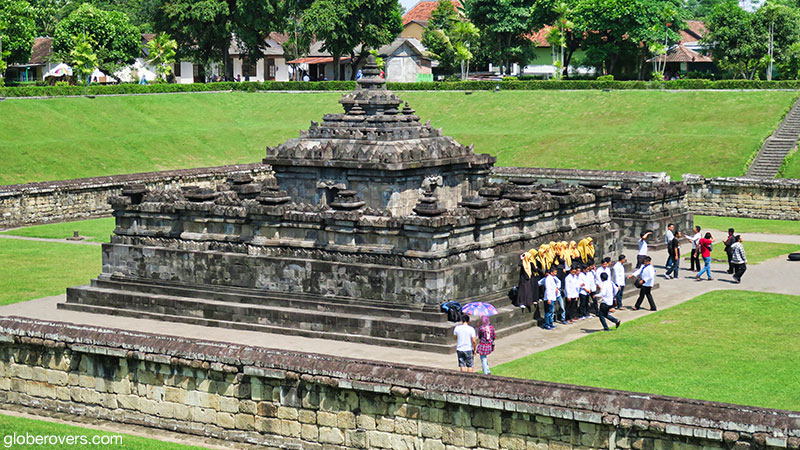

After reporting it to the Yogyakarta Archaeological Office, they concluded that a large ancient temple was buried here under the rocks sent by an erupting Mount Merapi in 1906. After a long and tedious excavation, reconstruction and restoration, the temple was finally opened to the public in 1987. You won’t see this temple from afar as it remains about 6.5 metres below the surrounding ground level.
Descend one of the stairways situated at each of the four corners to reach the small temple. The main temple is 7.5 metres tall with several niches on all sides decorated with statues of Shiva, Mahaguru, Ganesha, and Durga.
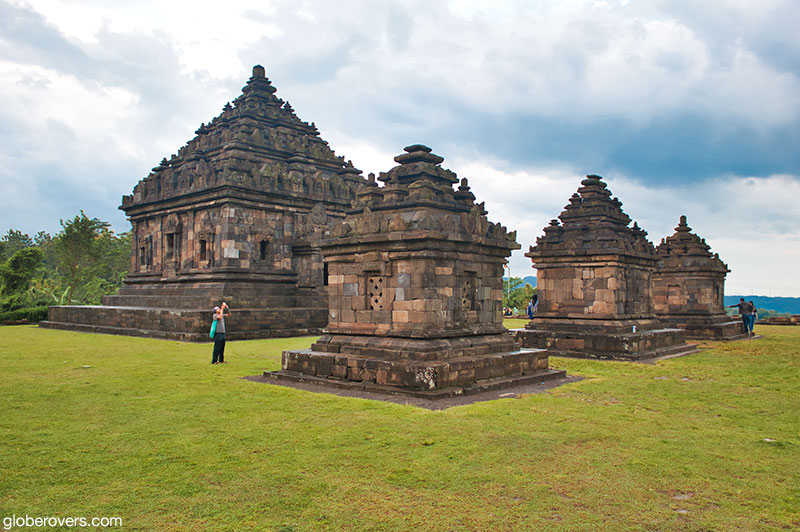
Southeast of Prambanan temple and Ratu Boko temple, located at the highest altitude of all temples in this area (410 metres), is Ijo temple, located in Bukit Ijo, in the Sambirejo regency.
Also built during the 9th century, this complex consists of 17 buildings across 11 terraces, though only those at the top terrace have been restored. The temples are decorated with various forms of Hindu carvings.
☛ Read more: 10 Great Travel Experiences in Indonesia
The views from Ijo temple are spectacular and a popular spot for romantic lovers to come and watch the sun setting over Yogyakarta’s Adisutjipto airport, and the city of Yogyakarta. The small temples are not nearly as spectacular as this setting high above the city. Don’t miss the views of smouldering Mount Merapi volcano, which lies less than 30 km to the north.
You could easily spend a few days exploring this area!
More photos of the ancient sacred ruins east of Jogja

Candi Plaosan Lor (north), Bugisan village 
Candi Prambanan, Bugisan village 
Candi Bukit Ijo, Desa Sambirejo, Prambanan 
Candi Plaosan Lor (north), Bugisan village 
Candi Plaosan Lor (north), Bugisan village, Central Java, Indonesia
More of Indonesia:



Blog post and photos by Peter who has been travelling almost full-time since 2005 and has been to over 122 countries. He visited several countries, such as Japan, more than 20 times. Peter is Editor-in-Chief and Publisher of GlobeRovers Magazine, an independent travel magazine focused on intrepid destinations.

